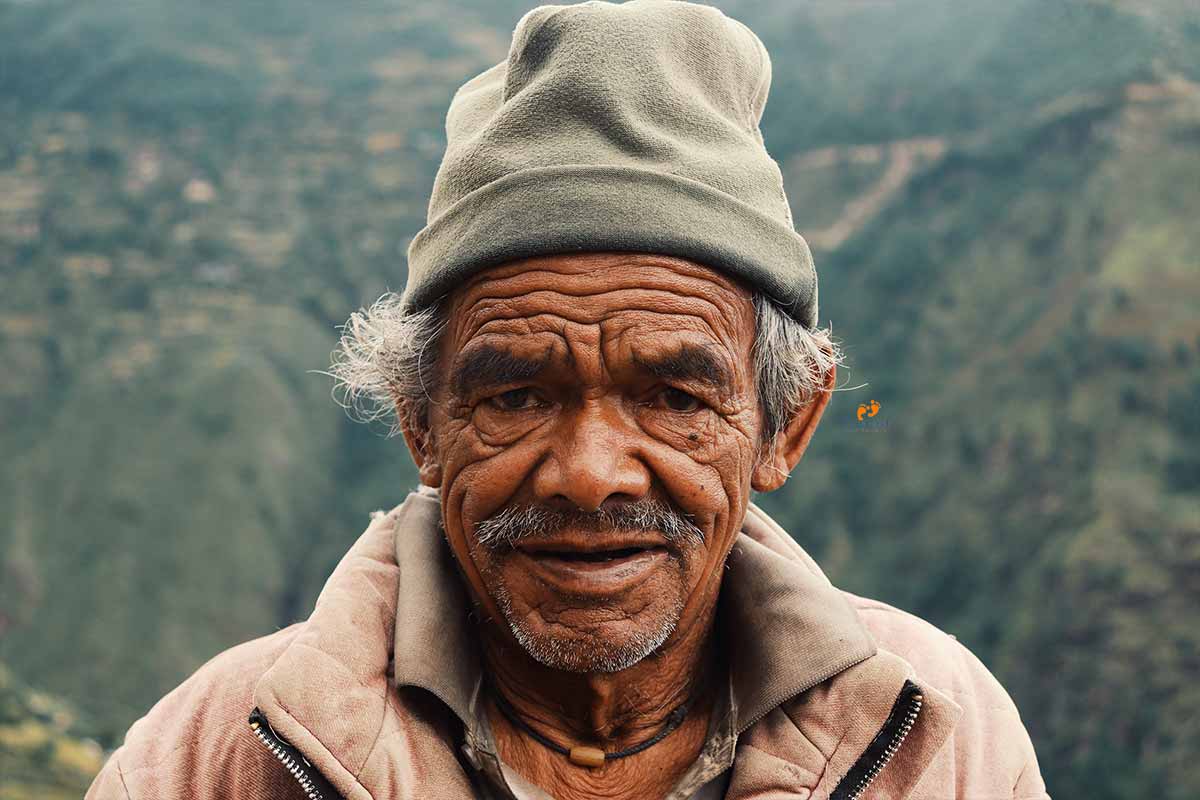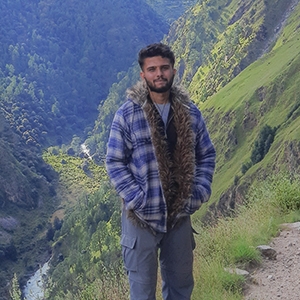Understanding the Nepali Life Cycle
Nepal, a land full of cultural variety and tradition, is home to multiple life-cycle rituals rooted in a unique fusion of Hindu and Buddhist faiths. From birth to death, every life stage is characterized by special ceremonies and practices that celebrate personal milestones while boosting combined bonds and cultural essence.
The beginning of life
The first birth ceremony is usually led by a priest who chants mantras to bless the child and wish them a successful life. The arrival of a newborn is considered a godsend, and several practices are held to welcome the child. One of the most important ceremonies is the "Nwaran," or naming ritual, which typically occurs on the 11th day after birth. During this ceremony, the family priest selects a promising name for the child based on astrological charts.

Another significant ceremony is the "Pasni," or rice-feeding ceremony, which usually occurs when the child is about six months old. This rite marks the child's first introduction to stable food, typically rice, signifying the start of a new chapter in the child's life. The event is often attended by prayers for the child's soundness and well-being and is celebrated with family and friends coming together.
Childhood Rituals
Several pivotal rituals mark their development as the child matures. For boys, the "Bratabandha," or sacred thread ritual, stands out as one of the most significant rites during boyhood. This ceremony, typically held during adolescence, symbolizes the shift from childhood to adulthood. During the ceremony, the boy receives a holy thread, or "janai," symbolizing his new commitments and his connection to the divine.
Education in Nepali culture goes beyond formal teaching. Children also learn within the family, where they are taught values, morals, and traditions. Respect for elders, a sense of responsibility toward the family, and devotion to cultural practices are crucial parts of this informal education, shaping the child's personality and preparing them for their social role.
Marriage ceremony in Nepal
Marriage in Nepal is a major life event, celebrated with detailed rituals and celebrations. The wedding itself spans several days, featuring key rituals like the Kanyadaan, where the bride’s father hands her over to the groom, and the practice of taking seven steps together, signifying the couple's devotion to one another. Traditionally, marriages in Nepal are arranged by the families of the bride and groom, who consider aspects like caste, religion, and astrology to assure compatibility. Although love marriages are increasingly common, mainly in urban areas, arranged marriages still dominate, particularly in rural societies.

Nepali weddings are joyous events filled with colorful festivities, traditional apparel, and joint feasting. These ceremonies highlight the country’s cultural variousness, with each ethnic group bringing impressive customs and traditions. For example, Newari weddings stand out for their intricate rituals and grand feasts, reflecting the community’s deep cultural roots.
Death Rituals
The last phase of life in Nepal is the death ritual, an event treated with deep respect and reverence. The Antyesti ceremony, the last rites in Hindu religion, is conducted to honor the dead and nurture their peaceful journey to the afterlife. This ritual involves cremation, indicating the release of the soul from the physical body. The eldest son or a close male family usually performs the final rituals, including lighting the funeral fire. Afterward, the ashes are thrown in a river, believed to guide the soul to the afterlife.
The mourning time, lasting 13 days, serves as a time for the family to reflect and undergo spiritual cleansing. After the cremation, the family performs several "Shraddha" rituals to celebrate the departed and support their soul's journey to the afterlife. These rituals, which involve food offerings and prayers, are held at specific intervals after the death, including the 13th day, the 45th day, and yearly.
Nepalese Perspective on Life
Nepalese views on life are deeply rooted in interconnections, spirituality, resilience, and happiness. These values influence how Nepalis tackle daily challenges, maintain cultural practices, and find purpose in life. With a primarily Hindu population and significant Buddhist influence, spirituality is knitted into the heart of Nepali culture. Temples and shrines play a prominent role in daily life, and regular festivals bring unique traditions and celebrations.
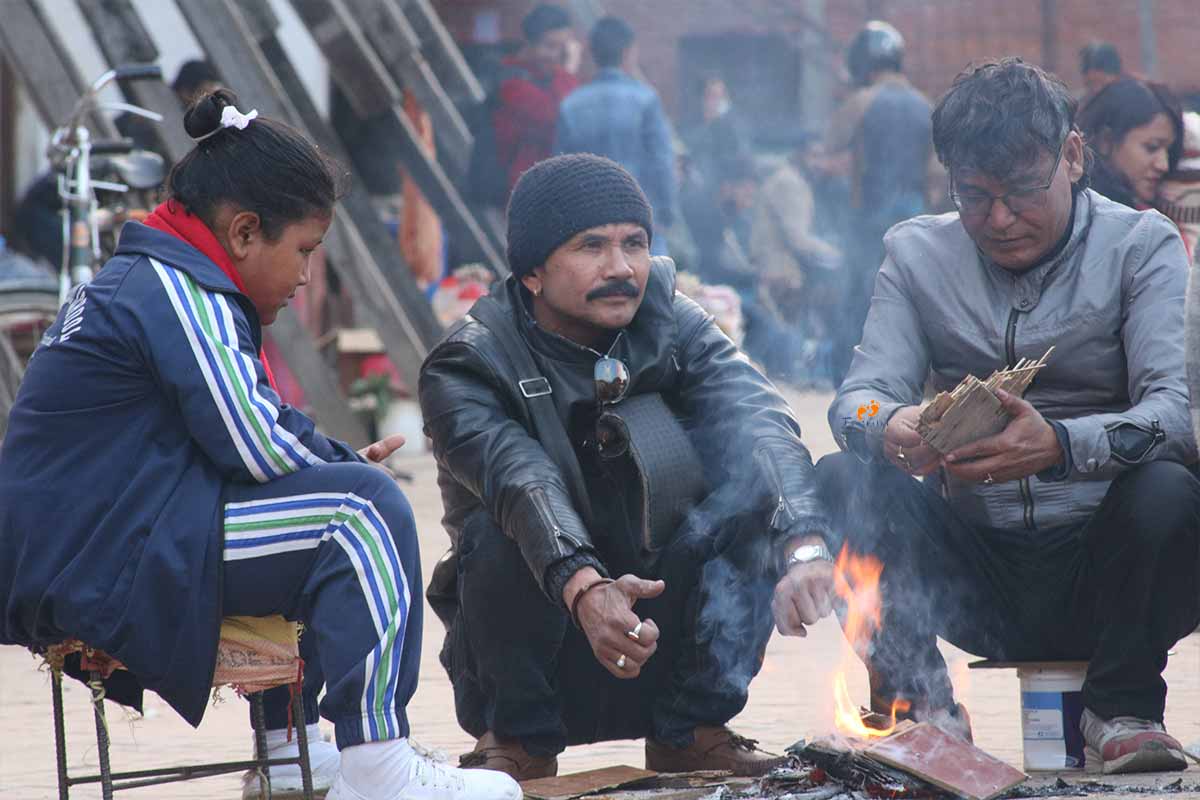
Time & Karma: Nepal has a different perception of timing compared to Western society. This often leads to a more relaxed approach to plans, which can be challenging for those who are used to following strict punctuality. However, relationships and community are often prioritized over rigid schedules in Nepal.
The concept of "karma" also seriously influences the Nepali outlook on life. There is a deep-rooted sentiment that one's actions in this life will affect present and future lives. This belief seeds a sense of blessing and resilience, helping Nepalis face life’s challenges with grace and stillness.
Simplicity and Contentment: Despite Nepal's diverse communities, many Nepalese find happiness in simple living. They tend to value experiences over material controls, taking joy in life's small pleasures. Family, community, and spiritual well-being often take priority over the pursuit of wealth and status, fostering an aware and thankful approach to life. The Nepalese outlook emphasizes balancing material quests with spiritual growth. While wealth and possessions are valued, they aren't the primary focus. This mindset is obvious in the simple yet fulfilling lifestyles of many people in Nepal.
Adaptability: Nepalis are known for their resilience and adaptability. The harsh terrain and frequent natural disasters, like earthquakes, have shaped them into resourceful and self-sustaining individuals. Over time, they have developed effective coping strategies to manage hardship, relying heavily on strong community support. This resilience is reflected in their approach to life, as they confront challenges with determination and a readiness to adapt to whatever comes their way.
Spirituality as the Core of Existence: For most Nepalis, life is viewed as a journey of the soul, where the physical and spiritual worlds are closely knotted. The outlook is influenced by the country’s prevailing religions, Hinduism and Buddhism. In Hinduism, which the majority of Nepali people practice, life is seen as a cycle of birth, death, and rebirth, with the ultimate goal being liberation from this cycle. Achieving moksha (liberation) is believed to come through moral living, devotion, and spiritual knowledge, guiding Nepalis to live purely upright, compassionate lives in harmony with the cosmic order. Traditions are highly cherished, with rituals and customs passed down through generations. Festivals and celebrations serve as vital moments for communities to come together and enjoy their shared values and sentiments. From a Buddhist perspective, there is a focus on detaching from material cravings and striving for enlightenment (nirvana) through ethical conduct, meditation, and knowledge.
Patience & Acceptance: Nepali culture highlights embracing one's circumstances and exercising patience when faced with challenges. This attitude is rooted in the belief that life is a journey with its share of highs and lows and that adjusting and finding joy in the present moment is crucial. Nepalis typically maintain calm behavior and are not easily shaken by difficulties. They hold the belief that with patience and resilience, even the hardest obstacles can be conquered.
Community & Relationships: In Nepal, the family serves as the cornerstone of society, with connections built on respect, commitment, and joint support. Elders hold a place of honor, and their insight is often sought in making necessary decisions. Community ties are equally significant, especially in rural regions where most Nepalis live. Villages function as close-knit communities where people rely on one another for support during festivals, marriages, or emergencies. Conflicts are commonly resolved through dialogue and agreement rather than confrontation. There is a serious belief in the power of community and social networks to offer security, advice, and a sense of belonging.
Food and Food Customs
When visiting Nepal, one of the most notable cultural differences that can lead to culture shock is the local cuisine and food traditions. From the way meals are cooked and served to the types of dishes commonly consumed, Nepal's food culture is different from Western standards. Nepali food customs are extremely rooted in social and family connections, highlighting the essence of sharing and communal eating. In Nepal, it's common for family members to gather and share meals, often sitting together and eating from a shared pot or plate. Understanding these customs and being open-minded about tasting new foods can help lessen the culture shock and allow travelers to engage themselves in the Nepali food experience fully.
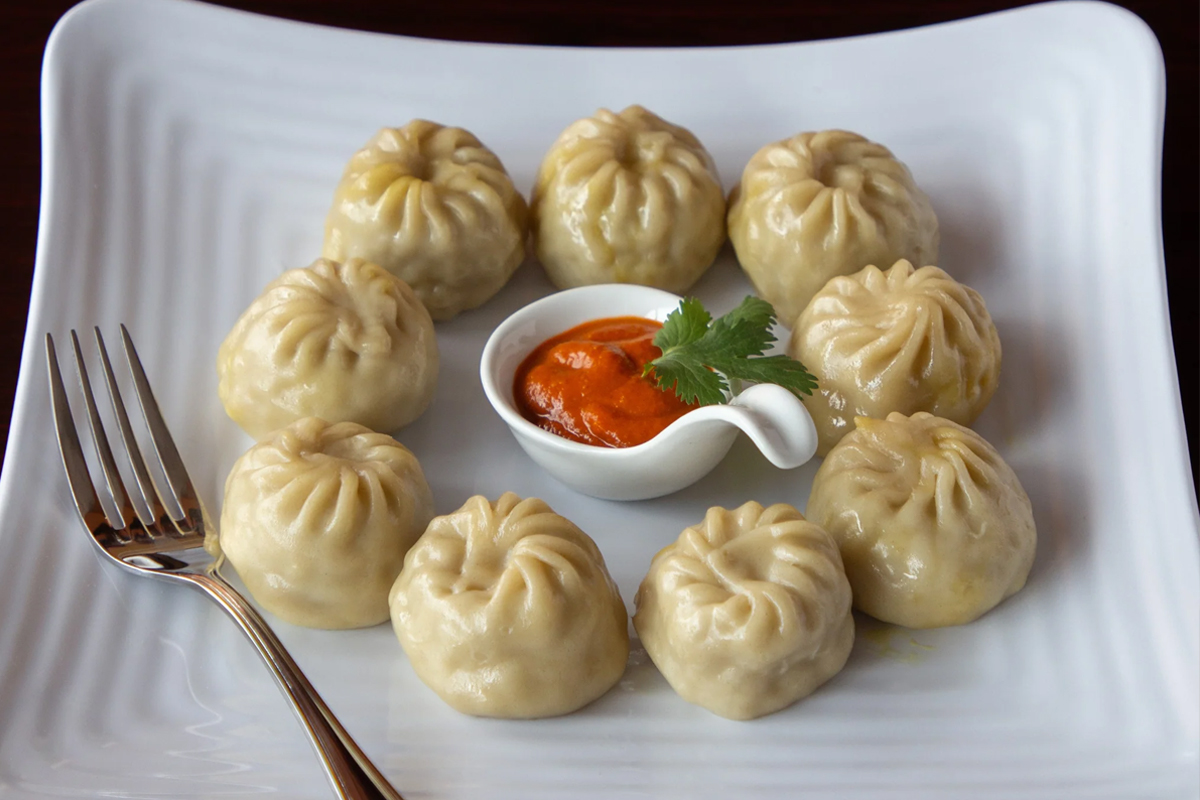
Staple Dishes: The most common regular food in Nepal is dal bhat, which consists of rice and lentil soup and is commonly served for both lunch and dinner. Dal bhat is often served with vegetable curries, pickles, and crisp flatbread called papad. For newcomers, the regularity of dal bhat might come as a surprise, but it’s a vital part of daily life in Nepal. Another popular dish is momo, dumplings filled with meat or vegetables, usually served with a spicy tomato sauce and commonly available at street stalls and restaurants throughout Nepal. However, visitors should be conscious when trying street food, as hygiene standards may differ from what they are used to.
Eating Rituals in Nepal: Dining in Nepal applies specific manners and rituals that may be unfamiliar to new visitors. To show respect and adapt to local food rituals, it's important to understand these practices. In many areas of Nepal, it's standard to eat with your right hand, particularly when enjoying traditional meals like Dal Bhat. This practice is tied to cultural and religious beliefs, as the left hand is considered unclean. Visitors should be aware to avoid using their left hand when eating or passing food to others.
In group meals, it’s traditional to serve elders first as a mark of respect. Younger family members often wait until the elders start eating before they start. In some traditional households, men may be served before women and children, although this ritual is evolving in metropolitan areas. In Nepal, it's important to wash your hands thoroughly before and after meals. Many homes also clean the dining area immediately after eating, reflecting the cultural affinity between cleanliness and purity.
Religious Influence & Food Restrictions
In Nepal, religious beliefs play an influential role in shaping dietary practices. Hinduism, which regards cows as sacred, strictly forbids the consumption of beef. As a result, beef is rarely found in the local diet, and even mentioning it can be awful to many Nepalese. While pork and chicken are commonly eaten, the avoidance of beef is overall. Additionally, the influence of Hinduism and Buddhism leads many Nepalese to adopt vegetarian diets, especially during sacred events and festivals.
Alcohol is consumed in Nepal, specifically during festivals and celebrations, but it’s usually done in moderation. Smoking, mainly in public areas, is generally discouraged, so it’s important to be aware of where and when you smoke or drink. Fasting is also a powerful religious practice in Nepal, with many people refraining from food or specific sorts of food on certain days or during festivals. For example, during Teej, a festival for women, many Hindu women practice a strict fast, often going without food or water for the entire day.
Festivals in Nepal: A culture shock
The festivals in Nepal, which are deeply ingrained in Nepal’s religious and cultural practices, provide an exquisite glimpse into the daily lives of the Nepalese people. For those new to the experience, the dynamic energy, diverse customs, and strong sense of community during these celebrations can be both intriguing and overwhelming, often leading to a sense of cultural shock.

Dashain, the longest and most significant festival in Nepal, is widely celebrated by Hindus throughout the nation. Celebrated in September or October, it spans 15 days and signifies the conquest of good over evil. The festival pays commendation to the goddess Durga, who is believed to have defeated the monster Mahishasura, representing the victory of fairness. During Dashain, the entire nation comes to a standstill, with businesses closing for up to two weeks. The streets are alive with kites, swings, and the sounds of traditional music. For visitors, this deep cultural experience, where the festival touches every part of life, offers a ravishing yet intense introduction to Nepalese culture.

Holi, the festival of colorings, is one of Nepal's most lively and widely celebrated events. Usually held in March to celebrate the arrival of spring, Holi breaks down barriers of age, caste, and community, tying everyone in a celebration filled with colors, music, and dance. The energy is real, with people dancing, singing, and tapping to both traditional and modern tunes. For those unpracticed to such joyous public festivities, Holi can be an overwhelming experience, vibrant, chaotic, and completely unforgettable. For those who value personal space or aren’t expecting such interactions, it can be surprising, though it’s all embraced with the intention of fun.
Learn more about the major festivals of Nepal.
The body language, symbols & standards of dress
Nepalese culture tends to be conventional regarding clothing and the display of the body, concerning both men and women. While it might not be immediately obvious, the traditions around when and how the body is shown become clear with closer observation. Further, the head holds special significance and is considered the most sacred part of the body, and it's weird to see children being patted on the head. One of the most recognizable symbols of Nepal is the "topi," a cloth cap typically worn by men and boys across the country. However, men from the Himalayan region and particular ethnic groups in the Terai region normally don't wear topis due to cultural distinctions. The topi is also an integral part of the official uniform for Nepal's civil servants.
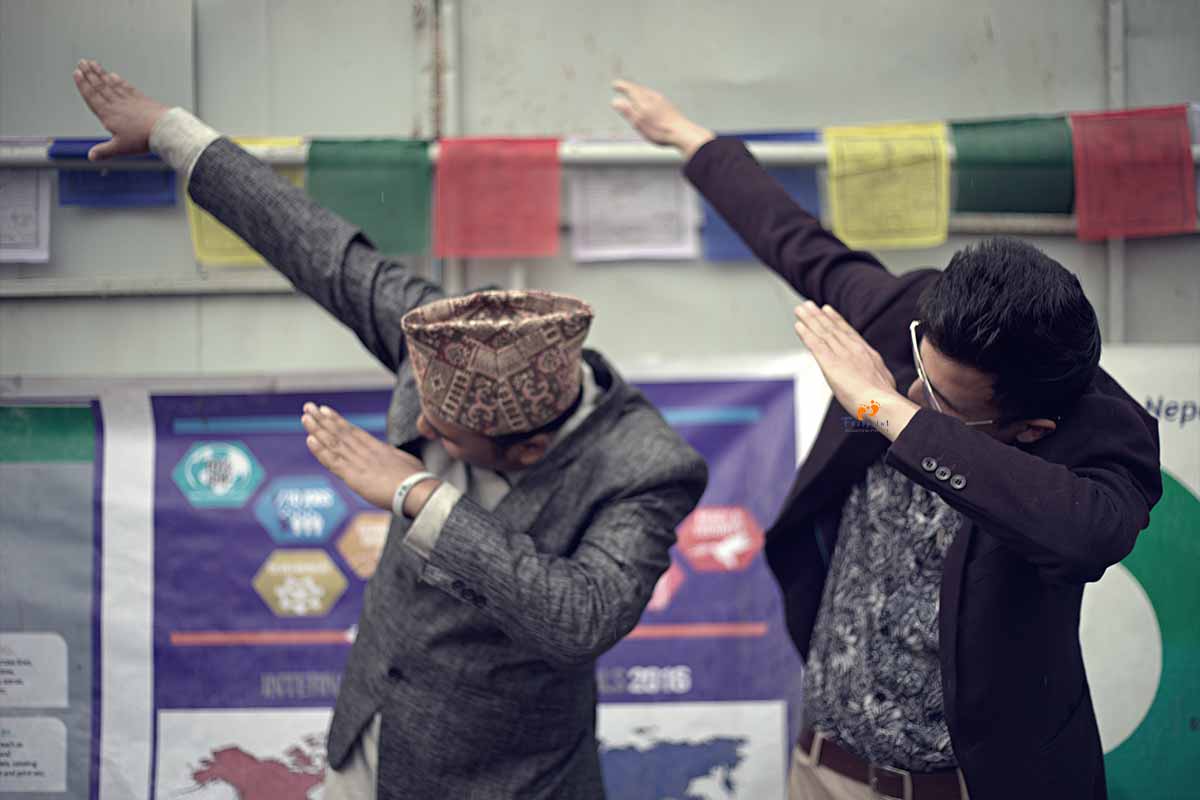
The tika, a universal symbol in Hinduism, is worn by men, women, and children as a mark or dot placed on the forehead. It can be a small plastic dot, a smeared line of sindoor, or a mixture of yogurt, rice, and red vermilion powder. The tika serves as a blessing from the gods and represents the divine presence within everyone. It holds special significance during the Dashain festival, symbolizing the goddess Durga's triumph and power over evil. Married women also wear a streak of red vermilion powder, known as sindoor, in their hairline above the forehead, denoting their marital status as a symbol of pride, as marriage elevates a woman's social class. Widows, however, do not wear it. Men normally do not wear plastic dots but receive a tika at home or at a temple, often blending it into their morning routine before heading to work.

Nudity, whether intentional or accidental, is quite uncommon in Nepal, even among people of the same sex. In both metropolitan and rural areas, the dress code is very conventional. Men rarely go shirtless, and even if their shirts are worn out and barely held together, they still wear them. Visitors to Nepal should follow this conservative dress code. Men are expected to wear at least a T-shirt and pants, and in remote regions, short shorts should be avoided. Women should consider wearing decent skirts and T-shirts. Dressing consciously is important not only for gaining respect but also for being allowed entry into temples and cultural places.
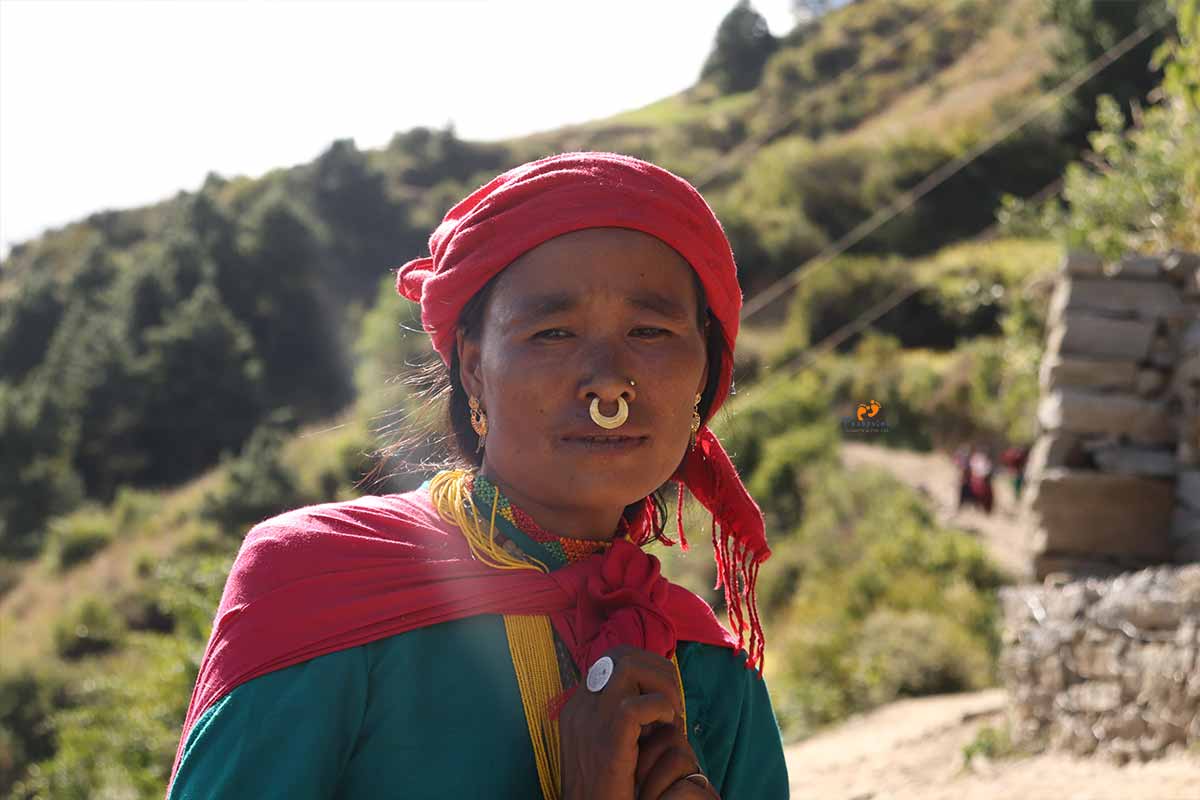
In rural Nepal, a person's social standing is largely determined at birth by two key factors: their sex and caste or ethnic group. In these communities, where most people are farmers, a farmer's caste plays a substantial role in defining their standing within the society. When individuals of the same caste encounter each other, factors like finances, age, land ownership, and other criteria are used to establish who holds a higher class.
Cultural Adjustments in Nepal
- Children are pampered crazy. Don't be surprised if you are the center of attraction everywhere.
- It's generally not appropriate to express bitterness openly in Nepal, and displays of adoration between men and women, even those who are married, are rare. Public acts like kissing especially are seen as offensive and viewed as signs of poor morals. However, it's considered perfectly acceptable for two men to walk together holding hands.
- Bargaining is an everyday practice and should be anticipated. Only engage in bargaining if you’re genuinely interested in buying. Once your offered price is accepted, it's important not to back out or try to negotiate an even lower price.
- In rural areas, clothing seems to be quite conservative. Men should avoid going shirtless, and women should be aware of outfits that expose their shoulders, such as strap tops, or short shorts. Ties and suits are normally unnecessary, except for special events.
- The cow is considered holy in Nepal. They go and rest where they want. Eye out for them while driving. Apart from this, you may not find it on the menu too.
- Foods are traditionally eaten with the right hand. It's polite to only take as much as you can eat, and it's considered good manners to request a second round of food while eating.
- Never step over anyone, and always move your feet to let people bypass footing over you.
- Gifts are seldom given and rarely opened in front of the person who has given it.
- Heads are sacred and should be treated with respect. Never take a cap off a man's head, not even for fun.
- Invitations are often given on short notice, so don't be surprised or take them as an insult. This is normal practice, and if you're busy, even a quick visit is valued.
- Left hands are used for cleaning oneself after going to the restroom. It is never used to pass or accept items, whether food at the table or money from a vendor.
- The person who extends the invitation typically covers the payment after a social gathering. Nepalis don't usually split the bill, and it's hoped that the others will return the favor on a future occasion.
- Rice holds religious value in addition to being an everyday staple, while shoes are considered unclean, so avoid asking others to handle them. Many Nepalis remove their shoes before entering a home.
- Always walk clockwise around temples, Buddhist monuments, and monasteries. Be sure to remove your shoes before entering and dress normally.
- Time is very relaxed. A person may show up at 3 for a 2 o'clock appointment. In the hills, a meeting may be a day or more late.
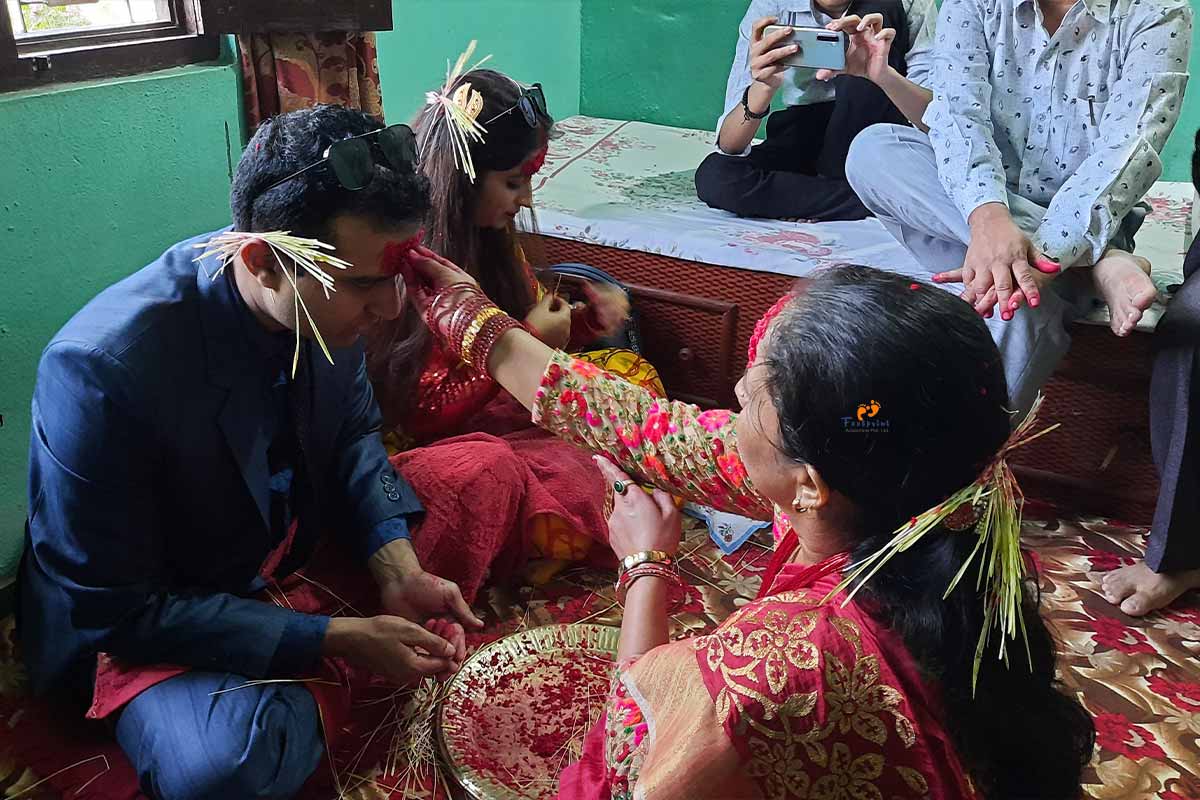
The Nepalese belief of life harmoniously integrates tradition, spirituality, and society. It highlights a balance between the material and spiritual wants, the individual and the joint, and humanity and nature. Adapting to Nepal involves more than adjusting to a new environment, it means immersing yourself in a prosperous land of age-old traditions, beliefs, and traditions. As you explore Nepal, welcome its unique differences, try its diverse flavors, and open your heart to this beautiful nation's deep lessons. By doing so, you'll not only overcome culture shock but also gain a deeper understanding of the world and your role in it.
